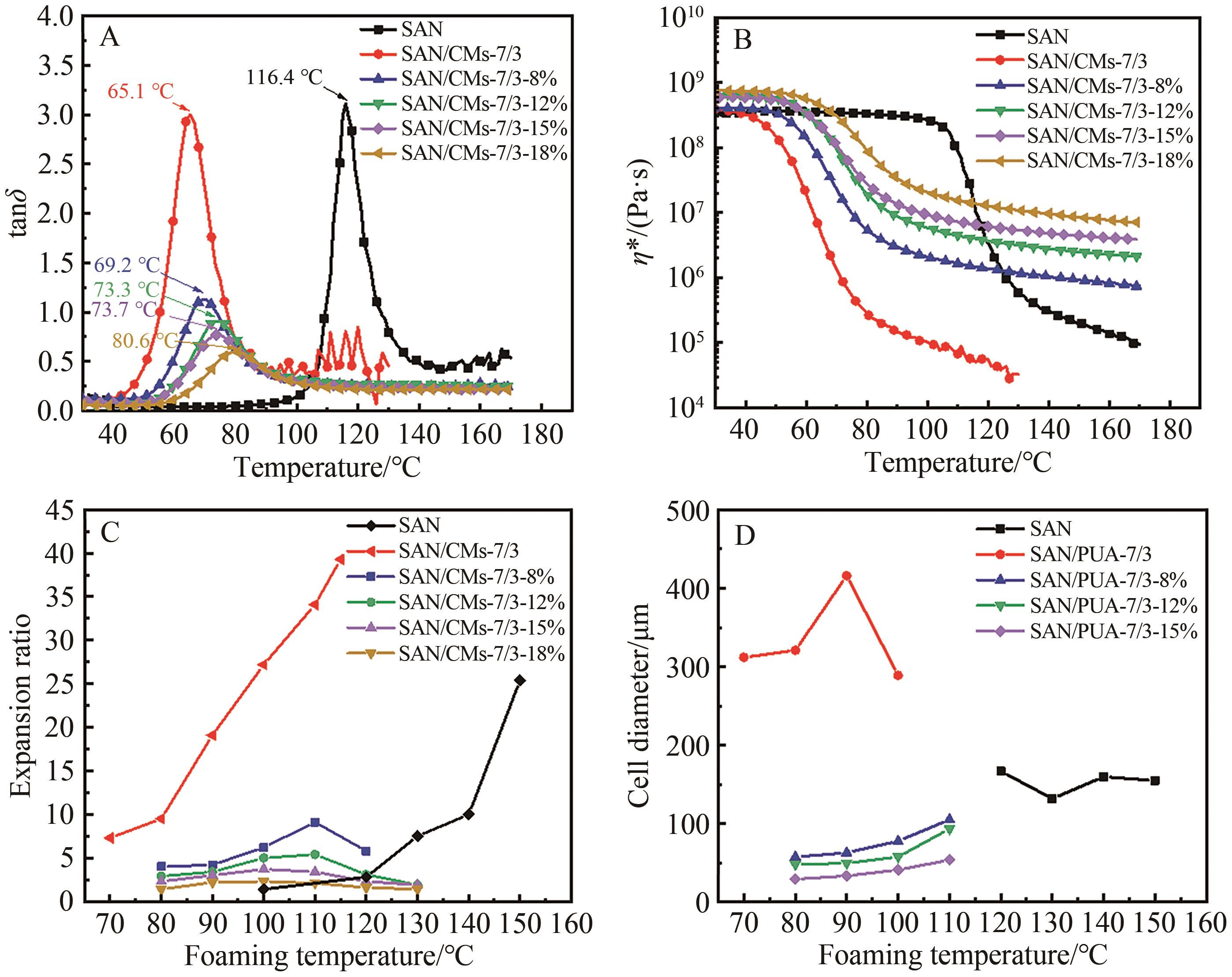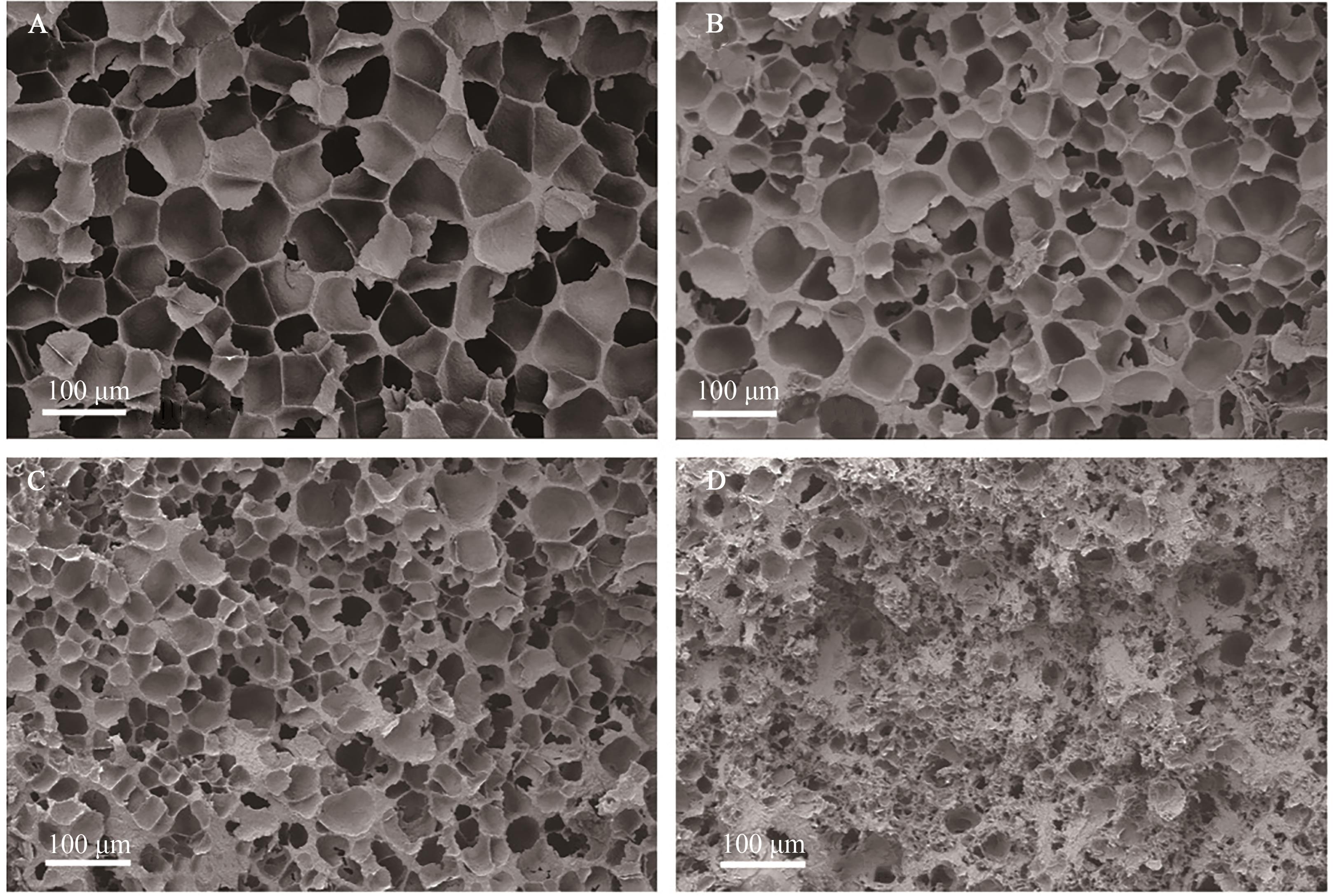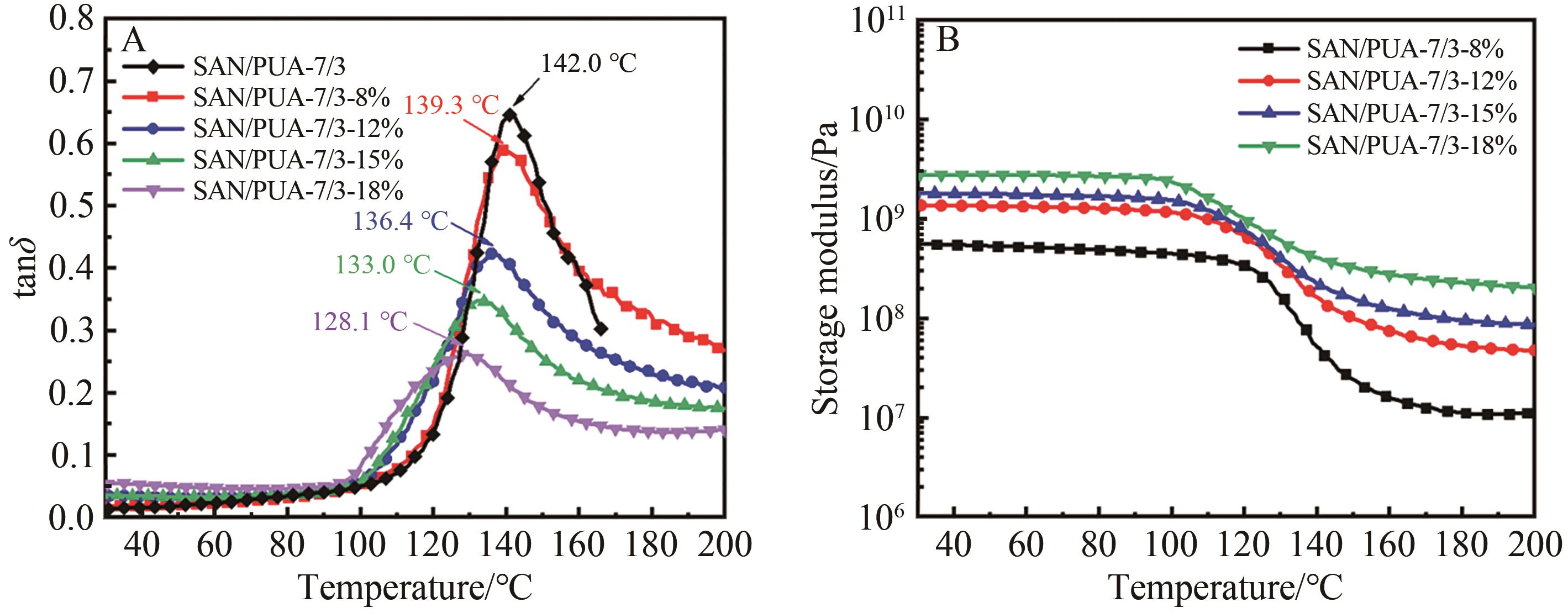
应用化学 ›› 2023, Vol. 40 ›› Issue (9): 1267-1276.DOI: 10.19894/j.issn.1000-0518.230139
碳纳米管改性苯乙烯-丙烯腈共聚物/聚脲纳米复合泡沫
田满1,2, 游江岸1,2, 姜治伟1( ), 唐涛1,2(
), 唐涛1,2( )
)
- 1.中国科学院长春应用化学研究所,高分子物理与化学国家重点实验室,长春 130022
2.中国科学技术大学应用化学与工程学院,合肥 230026
Carbon Nanotube Modified Styrene-Acrylonitrile Copolymer/Polyurea Nanocomposite Foams
Man TIAN1,2, Jiang-An YOU1,2, Zhi-Wei JIANG1( ), Tao TANG1,2(
), Tao TANG1,2( )
)
- 1.State Key Laboratory of Polymer Physics and Chemistry,Changchun Institute of Applied Chemistry,Chinese Academy of Sciences,Changchun 130022,China
2.School of Applied Chemistry and Engineering,University of Science and Technology of China,Hefei 230026,China
摘要:
聚合物纳米复合泡沫通常具有优于常规泡沫的综合性能。通过“增塑-发泡-增强”策略与多壁碳纳米管(MWCNTs)复合改性相结合的方法,制备出了MWCNTs改性的苯乙烯-丙烯腈共聚物/聚脲(SAN/PUA)纳米复合泡沫,并对加入MWCNTs后SAN/聚脲交联单体(SAN/CMs)共混体系的粘弹性和发泡性能以及对所制备的SAN/PUA纳米复合泡沫的耐热性能、导电性能和电磁屏蔽性能等进行了研究。结果表明,MWCNTs的加入可以有效减小SAN/PUA复合泡沫的最终泡孔尺寸,但不影响CMs对SAN的增塑效果; MWCNTs改性的SAN/PUA纳米复合泡沫比纯SAN(116.4 ℃)泡沫具有更好的耐热性能(128.1~139.3 ℃)。随着MWCNTs质量分数的增加,泡沫的储能模量增大,且导电性能和电磁屏蔽性能也增强;当MWCNTs质量分数为15%时,SAN/PUA纳米复合泡沫的电磁屏蔽性能达到30.7 dB。另外,研究发现,随着MWCNTs质量分数的增加,泡沫的电磁屏蔽能力将由吸收主导转变为反射主导。
中图分类号:







